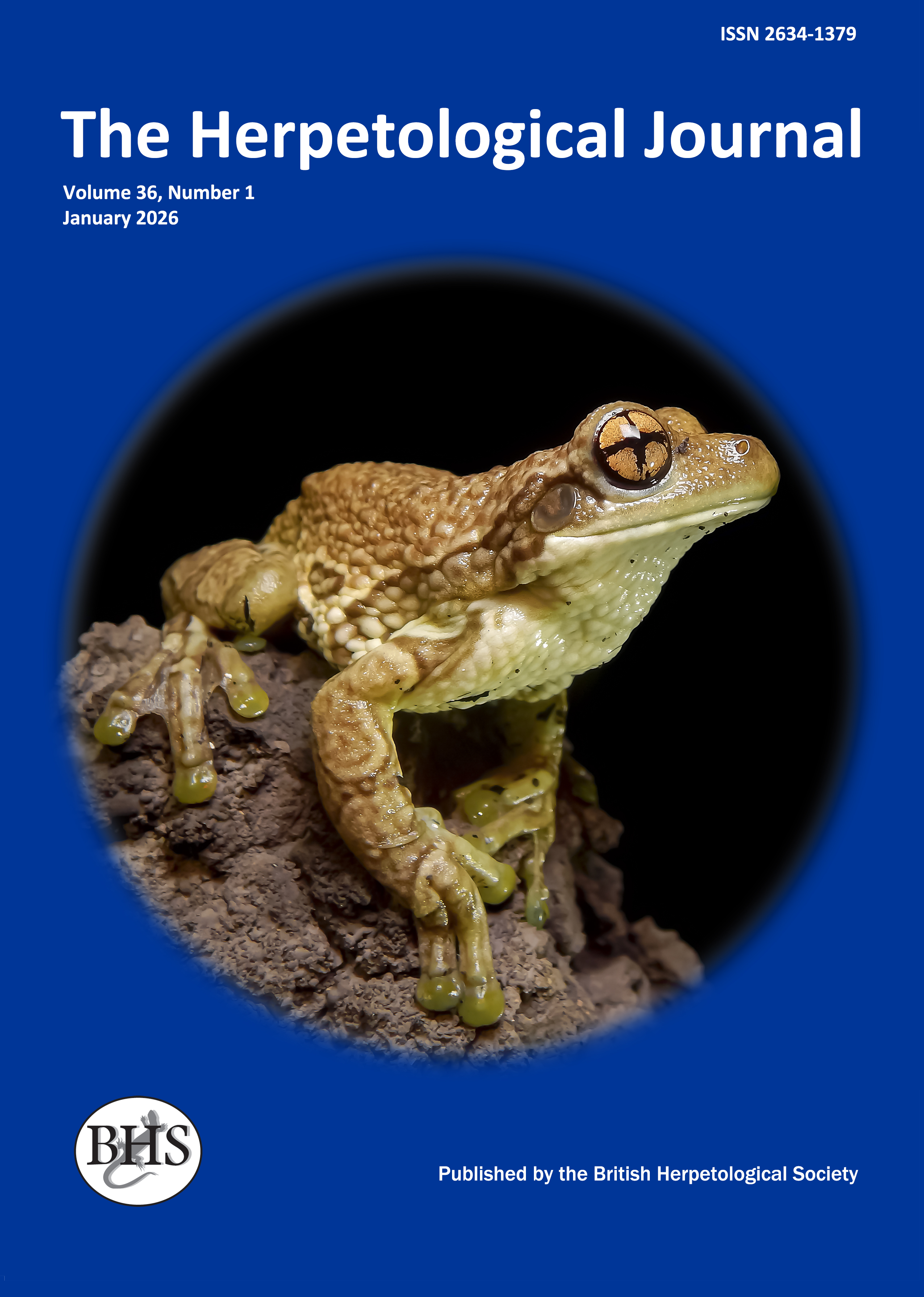
The Herpetological Journal
The Herpetological Journal is the Society's prestigious quarterly scientific journal. Articles are listed in Biological Abstracts, Current Awareness in Biological Sciences,Current Contents, Science Citation Index, and Zoological Record.
ISSN 0268-0130
2023 Impact Factor for the Herpetological Journal is 1.1, with the Journal sitting just below Quartile 2 in Zoology, at percentile 46.9
pdf 02. Assimilation of energy, protein and fatty acids by the spectacled caiman Caiman crocodilus crocodilus L
1665 downloads
Open Access
pp.72-76
Authors: John Davenport, Timothy J. A Ndrews And Giles Hudson.
Abstract: At 30±1°C, caimans (Caiman crocodilus) ate a mean satiation ration of 8.2% body weight. Mean total gut clearance time (TGCT) was 1 36 h; mean gastric emptying time (GET) was 97 h. These data indicate that caimans eat considerably less food than salt-water crocodiles ( Crocodylus porosus) of similar size, not because their meal size was less, but because they take much longer to process food. Assimilation efficiencies for protein, energy (cals) and dry mass were 9 1 .8%, 68.2% and 62.0% on a diet of sheeps' hearts and 90.2%, 69.2% and 64.7% in caimans fed on fish. These efficiencies are all significantly lower than those found in salt-water crocodiles. Hard particulate material is retained within the stomach by a powerful pyloric sphincter, but caimans appear not to eat gastroliths deliberately. Evidence is presented to show that polyunsaturated fatty acids (PUFAs), especially 22:5co3, are assimilated and incorporated into tissues. Fish-fed caimans showed more 20:5co3 and 22:6co3 in their tissue than liver-fed animals. It has previously been suggested that species of the Family Crocodylidae (believed to be of largely marine ancestry) can assimilate PUFAs while members of the Family Alligatoridae (probably of prolonged freshwater ancestry) cannot. The results of this study deny this clearcut distinction and indicate that any differences in lipid metabolism amongst crocodillians are likely to reflect ecological considerations rather than taxonomic patterns.

